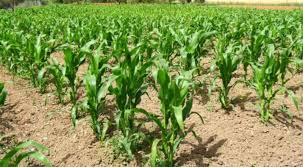Gooseberry farming,
Gooseberry farming, also known as amla farming or Phyllanthus emblica farming, involves the cultivation of gooseberry plants for their fruits. Gooseberries are small, round fruits that are rich in vitamin C and have various health benefits. They are commonly used in culinary preparations, herbal medicines, and cosmetic products.
Click on the link 🔗🖇️👇
Here are some important aspects of gooseberry farming:
Climate and Soil Requirements: Gooseberries are hardy plants and can tolerate a wide range of climates, from tropical to subtropical and temperate regions. However, they thrive in cool, temperate climates. The ideal temperature range for gooseberry cultivation is between 15°C and 30°C (59°F to 86°F). They prefer well-drained soil with a pH level between 5.5 and 7.5.
Varieties: There are several gooseberry varieties available, each with its own characteristics and suitability to different growing conditions. Some popular varieties include Chyavanprash, Banarasi, Krishna, and NA-7.
Propagation: Gooseberries can be propagated through seeds, cuttings, or layering. However, growing gooseberries from seeds can be time-consuming, and it is more common to propagate them from cuttings. Take 6-8 inch (15-20 cm) hardwood cuttings from healthy gooseberry plants during the dormant season (late winter or early spring) and plant them in well-prepared soil.
Click on the link 🔗🖇️👇
Planting: Prepare the planting area by removing weeds and loosening the soil. Dig holes that are wide and deep enough to accommodate the root system of the gooseberry plant. Space the plants about 6-8 feet (1.8-2.4 meters) apart to allow for adequate air circulation and sunlight.
Irrigation: Gooseberries require regular watering, especially during dry periods. Water the plants deeply, ensuring that the soil is evenly moist. However, avoid waterlogging, as gooseberries are susceptible to root rot. Mulching around the plants can help retain soil moisture.
Fertilization: Conduct a soil test to determine the nutrient requirements of your gooseberry plants. Generally, gooseberries benefit from balanced fertilizers or organic compost applied during the growing season. Nitrogen-rich fertilizers should be avoided as they promote excessive vegetative growth at the expense of fruit production.
Pruning: Pruning is essential for gooseberry plants to maintain their shape, remove diseased or damaged branches, and improve airflow. Prune during the dormant season, removing old wood and thinning out crowded branches. This practice encourages new growth and enhances fruit production.
Pest and Disease Management: Gooseberries can be affected by pests like aphids, caterpillars, and spider mites. Regular monitoring and the use of organic pest control methods can help manage these issues. Gooseberries are also prone to diseases like powdery mildew and leaf spot. Fungicides and proper sanitation practices can help prevent and control such diseases.
Harvesting: Gooseberries are usually ready for harvest in the summer. Harvest the fruits when they reach their desired size and color, usually when they turn greenish-yellow or red. Gently pick the fruits to avoid damaging them.
Post-Harvest Handling: Handle the harvested fruits with care to prevent bruising. Store them in a cool and dry place or refrigerate them to extend their shelf life.
Gooseberry farming requires knowledge of horticulture practices, proper care, and attention to detail. It's essential to adapt the cultivation techniques to your specific growing conditions and consult local agricultural experts or extension services for region-specific guidance.
Follow me more details
Click on the link 🔗🖇️👇




Comments
Post a Comment